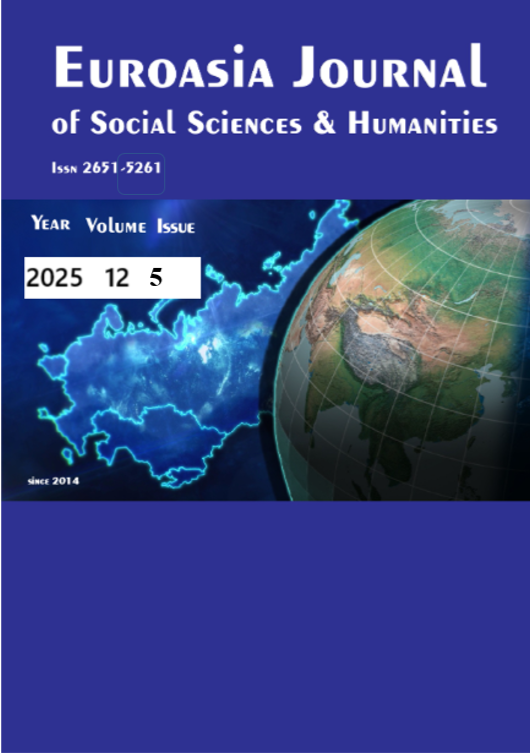Transmission Mechanisms of Conventional and Unconventional Monetary Policy: Evidence from the Türkiye Banking Sector
DOI:
https://doi.org/10.5281/zenodo.17389646Keywords:
Monetary Policy, Macroeconomics, BanksAbstract
Monetary policy is one of the fundamental macroeconomic tools that has a direct impact on the banking sector and financial stability. The profitability of banks is determined by both bank-specific factors and macroeconomic conditions. While traditional monetary policy tools (such as interest rates and reserve requirements) have long been considered fundamental elements shaping banking performance, unconventional tools implemented by central banks after the 2008 global financial crisis (such as liquidity injections, asset purchases, and reverse repos) have begun to play an increasingly critical role in affecting banks' margins and profitability. An assessment was made for Türkiye using monthly data from the period 2011-2025. The analysis was conducted using ARDL long-run coefficients and the short-run ECM. Finally, the Toda-Yamamoto causality relationship and the relationships between variables were discussed. The study shows that the reserve option mechanism and liquidity operations (non-traditional instruments) negatively impact asset profitability, while reserve requirements and funding costs (traditional instruments) have a positive effect.
Downloads
References
Ali, M. (2022). Fourier-ARDL approach for structural breaks in monetary policy and financial markets. Economic Modelling, 108, 105681. https://doi.org/10.1016/j.econmod.2022.105681
Athanasoglou, P. P., Brissimis, S. N., & Delis, M. D. (2008). Bank-specific, industry-specific and macroeconomic determinants of bank profitability. Journal of International Financial Markets, Institutions and Money, 18(2), 121–136. https://doi.org/10.1016/j.intfin.2006.07.001
Aysan, A. F., Fendoğlu, S., & Kılınç, M. (2014). Managing short-term capital flows in new central banking: Unconventional monetary policy framework in Türkiye. Eurasian Economic Review, 4(1), 45–69. https://ideas.repec.org/a/spr/eurase/v4y2014i1p45-69.html
Berument, H., & Dincer, N. N. (2008). Measuring the effects of monetary policy for Türkiye. Journal of Economic Cooperation, 29(1), 83–110. https://www.researchgate.net/publication/253781984_Measuring_the_effects_of_monetary_policy_for_Turkey
Borio, C., Gambacorta, L., & Hofmann, B. (2017). The influence of monetary policy on bank profitability. International Finance, 20(1), 48–63. https://doi.org/10.1111/infi.12107
Claessens, S., Coleman, N., & Donnelly, M. (2018). “Low for long” interest rates and banks’ Income structure. Journal of Banking & Finance, 96, 1–12. https://doi.org/10.1016/j.jbankfin.2018.08.003
Çapacıoğlu, T., & Alper, K. (2023). Funding quality and the pricing of retail rates: Evidence from the Turkish banking sector. TCMB Çalışma Tebliği No. 24/03. https://www.tcmb.gov.tr/wps/wcm/connect/0be683fa-a130-4104-8a70-33581ddec0e5/wp24_03.pdf
Demirgüç-Kunt, A., & Huizinga, H. (1999). Determinants of commercial bank interest margins and profitability: Some international evidence. The World Bank Economic Review, 13(2), 379–408. https://doi.org/10.1093/wber/13.2.379
Gambacorta, L., & Shin, H. S. (2018). Why bank capital matters for monetary policy. Journal of Financial Intermediation, 35, 17–29. https://doi.org/10.1016/j.jfi.2017.12.002
Gujarati, D. N., & Porter, D. C. (2009). Basic econometrics (5th ed.). New York, NY: McGraw-Hill.
Gürkaynak, R. S. (2023). Exchange rate and inflation under weak monetary policy. Economic Policy, 38(115), 519–548. https://academic.oup.com/economicpolicy/article/38/115/519/7238216
Kara, A. H. (2012). Monetary policy in Türkiye after the global crisis. TCMB Çalışma Tebliği No. 12/17. https://ideas.repec.org/p/tcb/wpaper/1217.html
Karacan, R. (2010). The impact of interest rate and exchange rate fluctuations on banking performance. Banking and Finance Journal, 15(2), 45–67.
Kartal, M. T. (2024). Relationship between monetary policy and financial asset prices in Türkiye. Journal of Economic Cooperation and Development, 45(1), 1–20. https://www.sciencedirect.com/science/article/pii/S2214845024000255
Kawamura, T. (2021). Central bank liquidity management and unconventional tools in emerging markets: Effects on bank profitability. Emerging Markets Finance and Trade, 57(3), 804–821. http://dx.doi.org/10.18235/0011620
Keskin, B. (2019). Macroprudential regulation, monetary policy, and credit supply in emerging economies. Emerging Markets Review, 38, 125–142. https://doi.org/10.1016/j.ememar.2018.12.001
Kosmidou, K. (2008). The determinants of banks’ profits in Greece during the period of EU financial integration. Managerial Finance, 34(3), 146–159. https://doi.org/10.1108/03074350810841935
Narayan, P. K.(2004). Reformulating critical values for the bounds fstatistics approach to cointegration: an application to the tourism demand model for Fiji, Monash University Department of Economics Discussion Papers ISSN 1441-5429, 02/04. 1-32.
Saunders, A., & Schumacher, L. (2000). The determinants of bank interest margins in Europe and the United States. Journal of International Financial Markets, Institutions and Money, 10(2), 111–134. https://doi.org/10.1016/S0261-5606(00)00033-4
Sezerer, K., Kahraman, G. Ö., & Afşar, M. (2024). Unconventional monetary policies and financial markets: A causality analysis for Türkiye. Yönetim ve Ekonomi Araştırmaları Dergisi, 22(4), 226–241. https://doi.org/10.11611/yead.1565349
Türkmen, B., Üçay, M., & Uzan, B. (2021). The Turkish Banking Sector: Crises and Pandemic Impacts Journal of Banking and Finance Studies, 33(4), 89–114.
Uluyol, O. (2019). Development of Banking in Türkiye between 1980 and 2000. Accounting and Financial History Research Journal, 17, 73–107.
Yıldırım, H., & Mirza, N. (2020). The effects of the ROK application on bank profitability: Panel regression analysis. Turkish Journal of Finance, 28(1), 55–78.
Wooldridge, J. M. (2015). Introductory econometrics: A modern approach (6th ed.). Boston, MA: Cengage Learning.
Downloads
Published
How to Cite
Issue
Section
License
Copyright (c) 2025 EUROASIA JOURNAL OF SOCIAL SCIENCES & HUMANITIES

This work is licensed under a Creative Commons Attribution-NonCommercial 4.0 International License.

